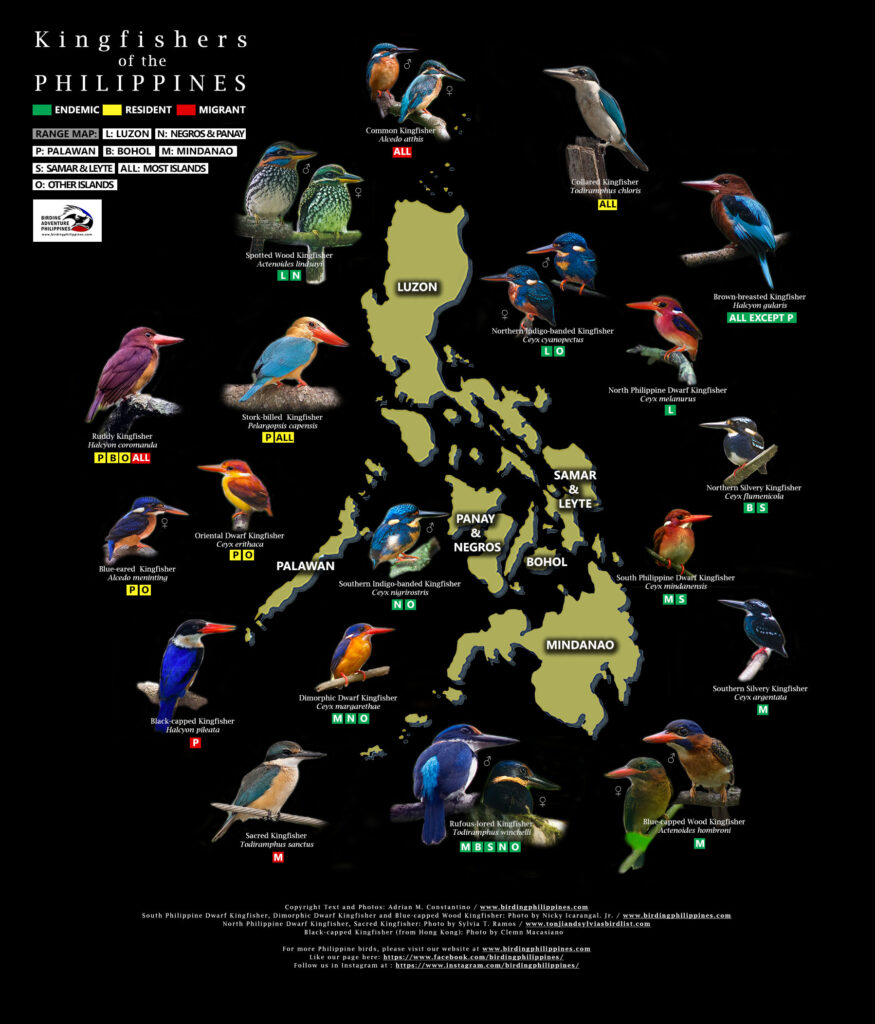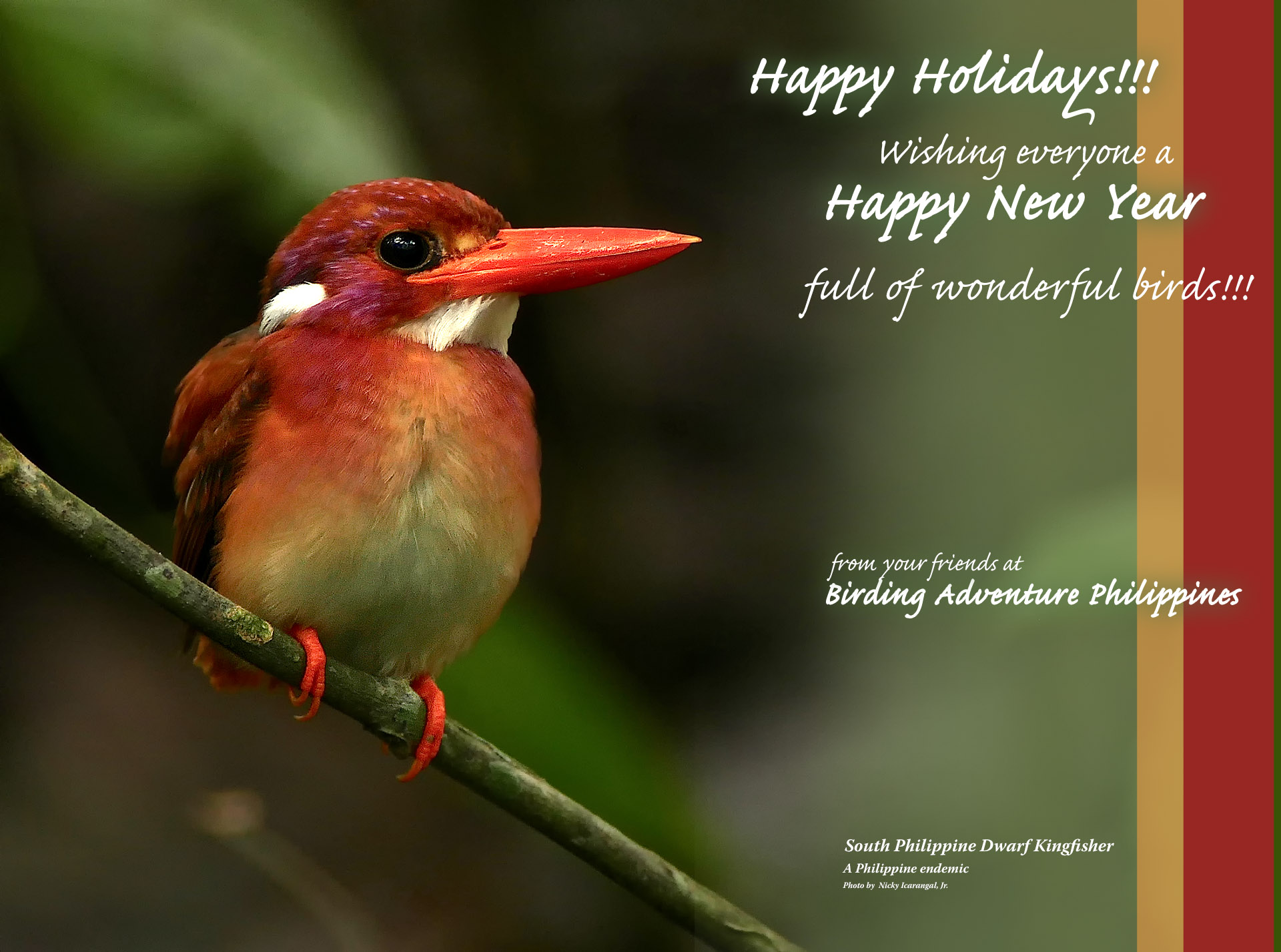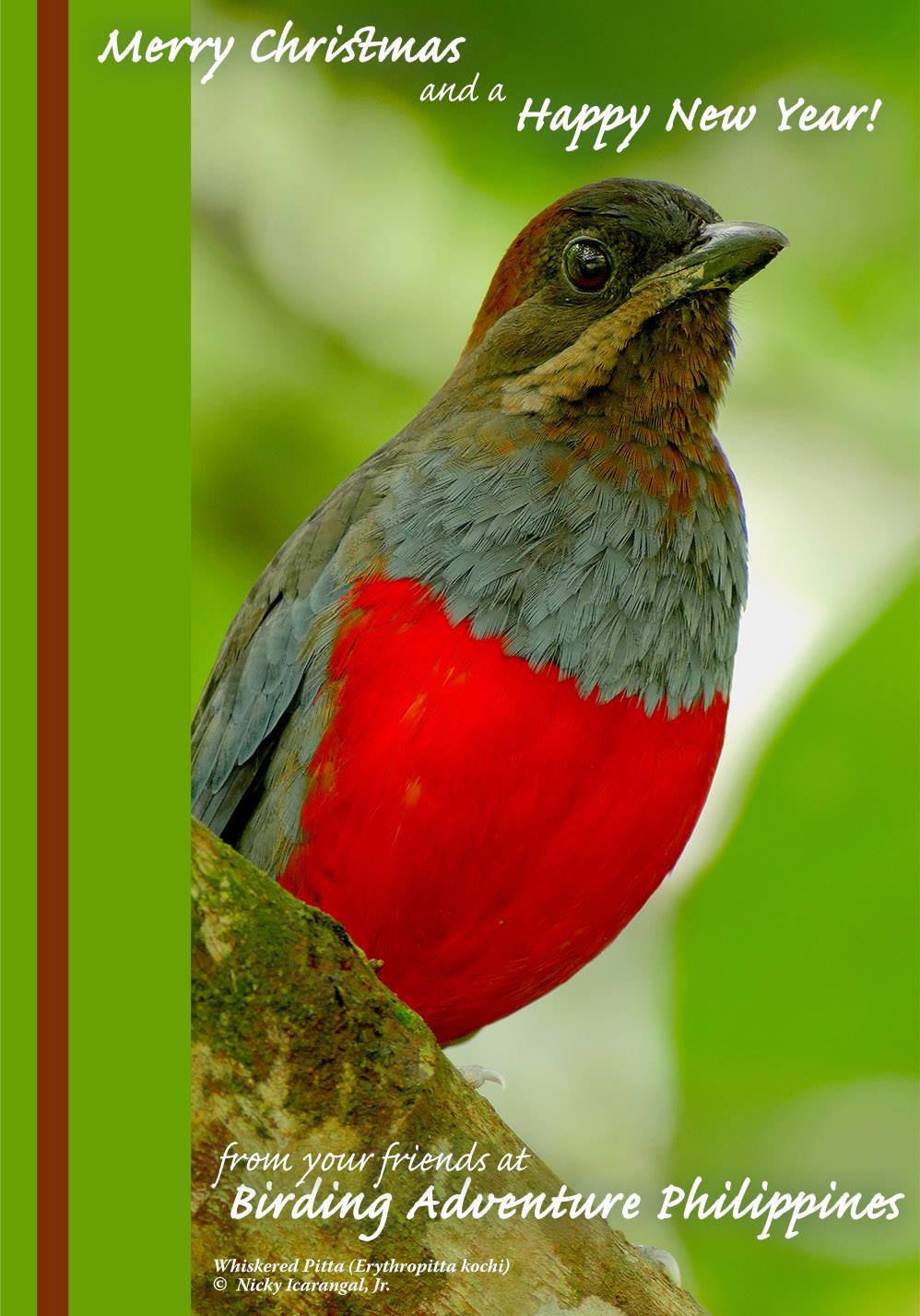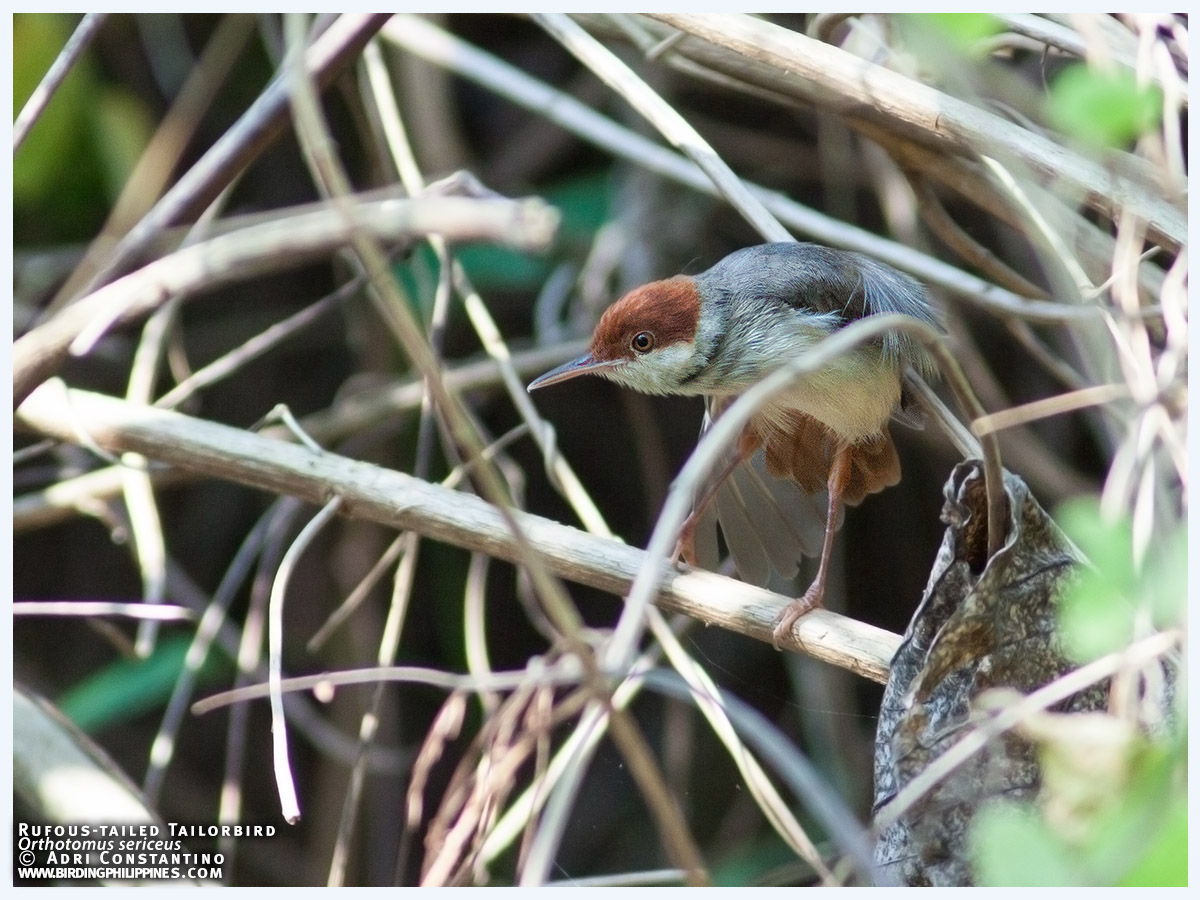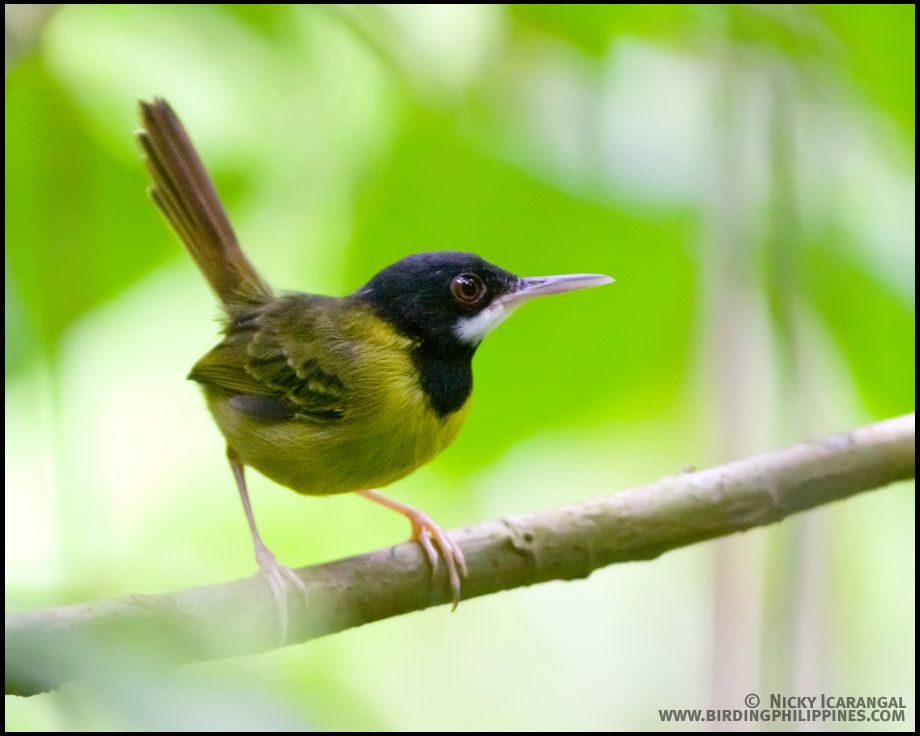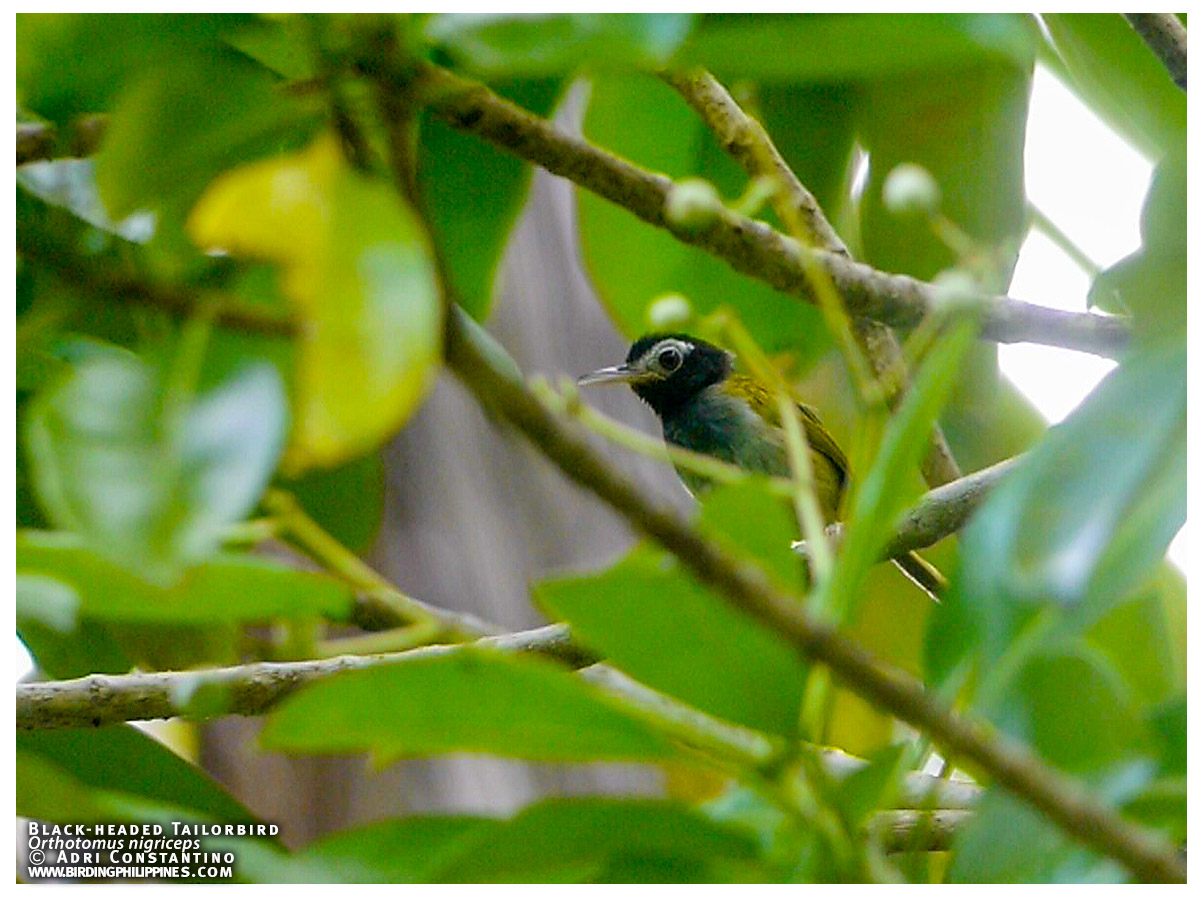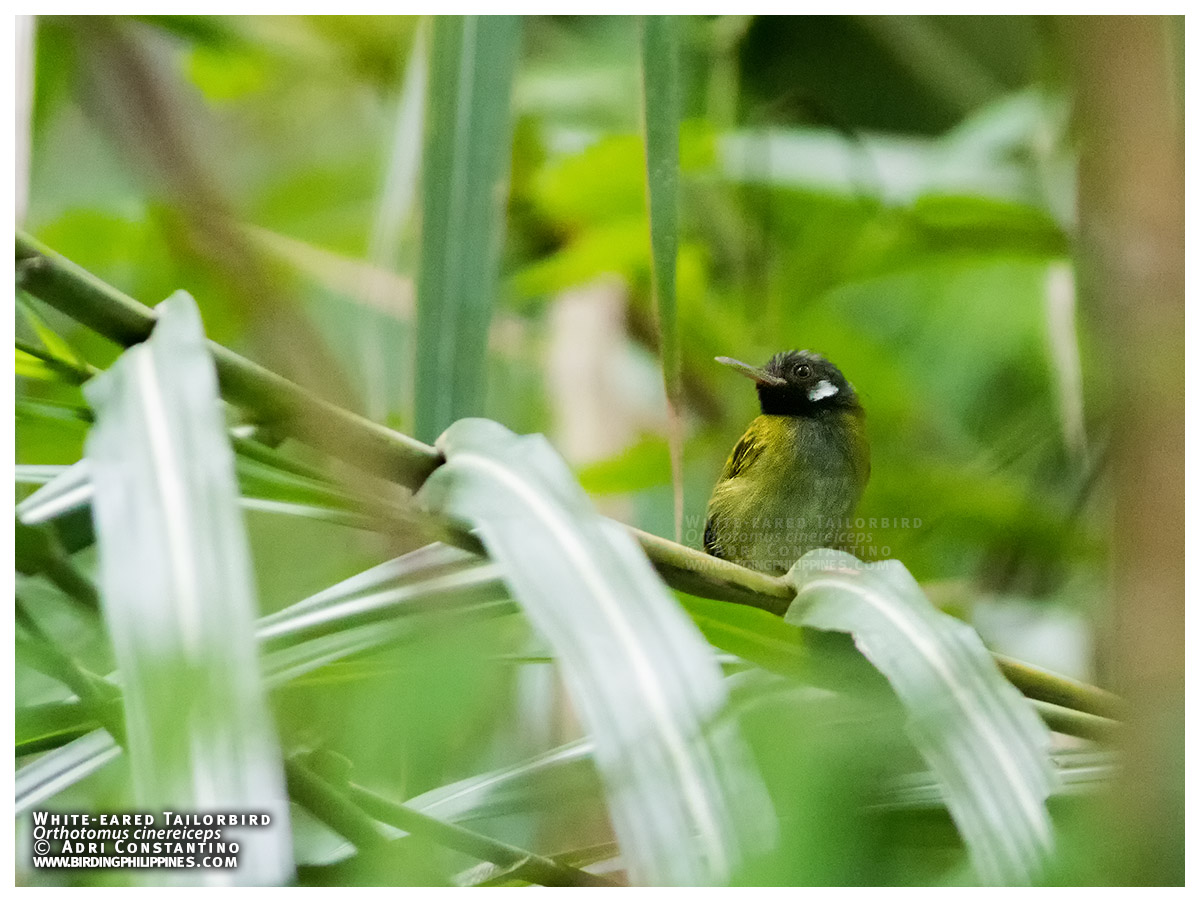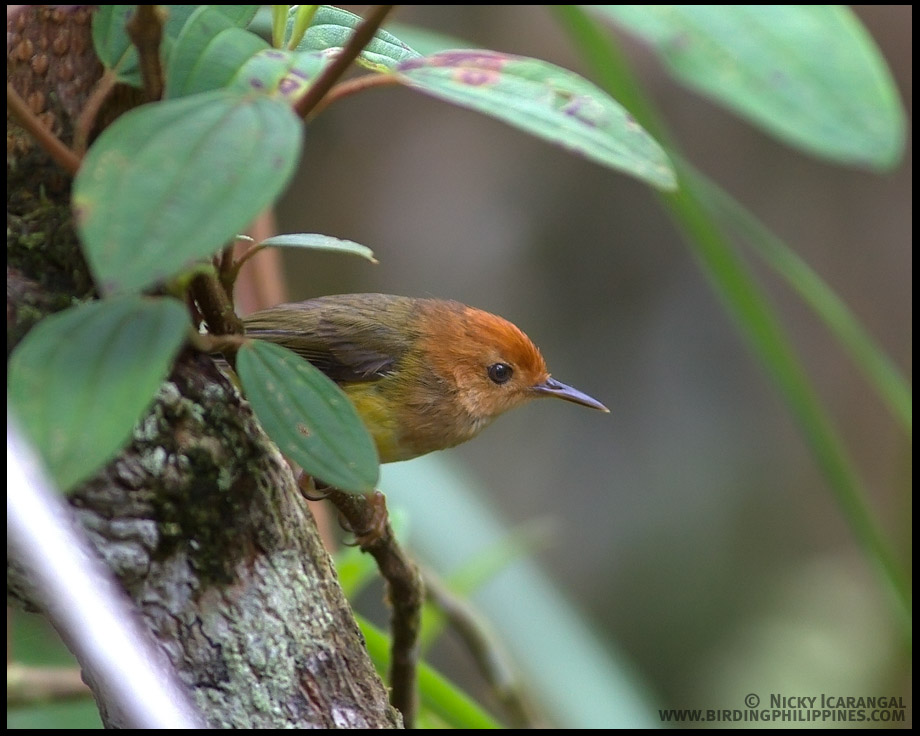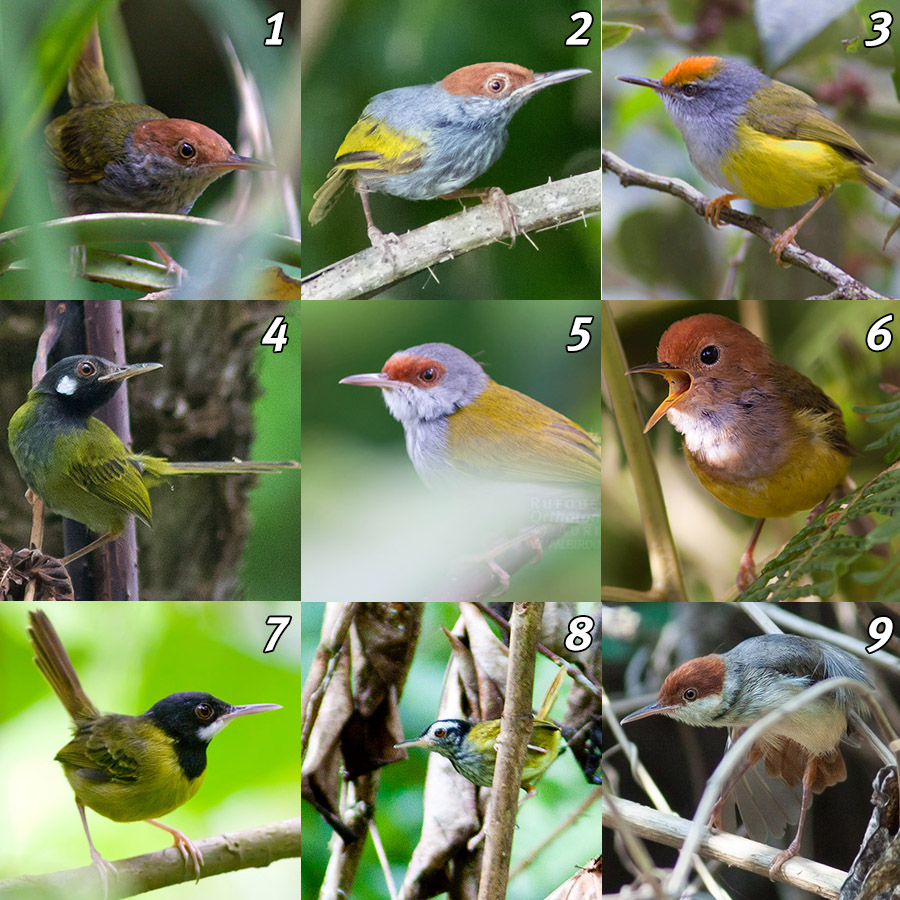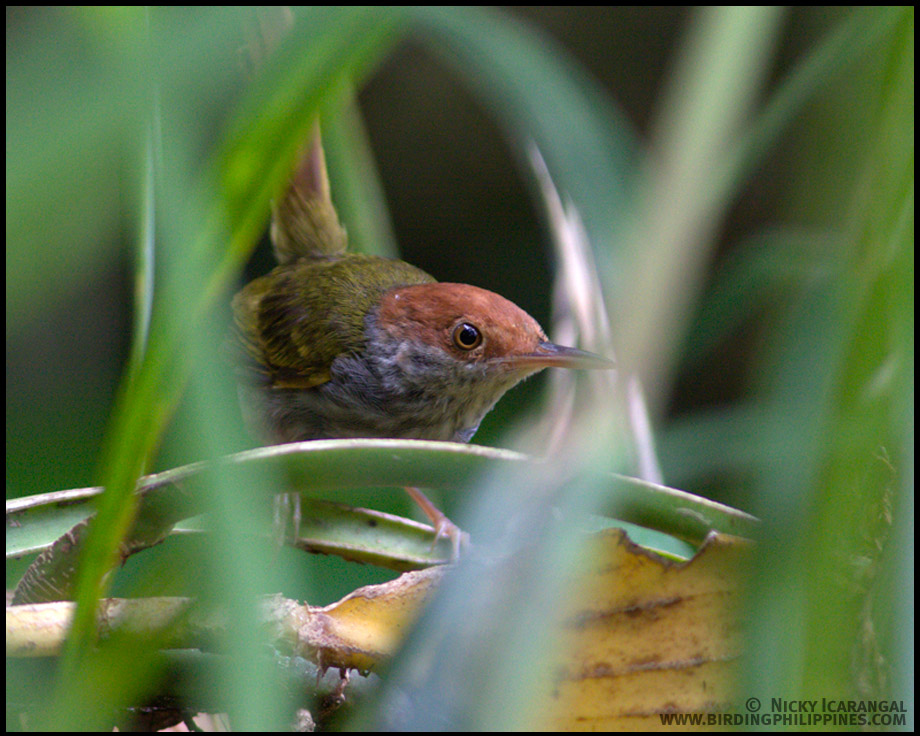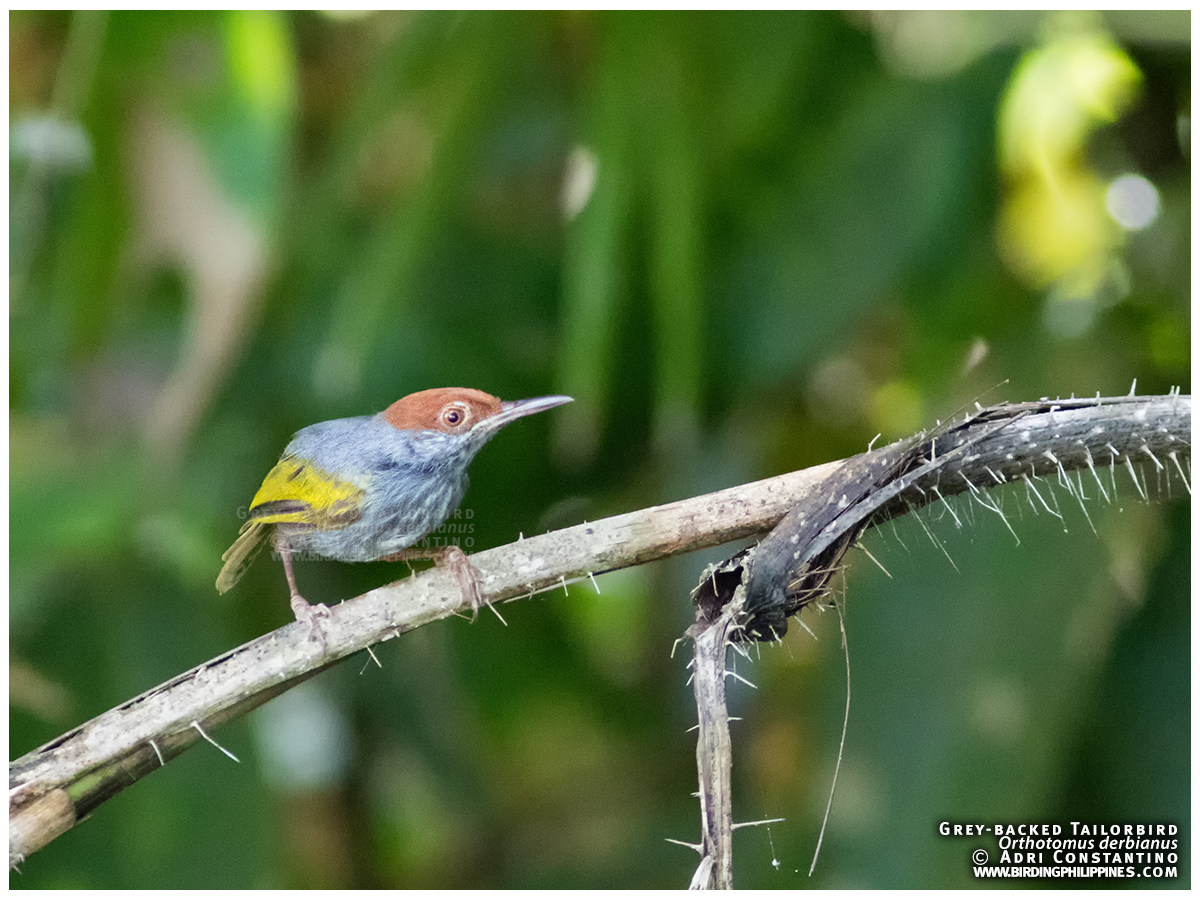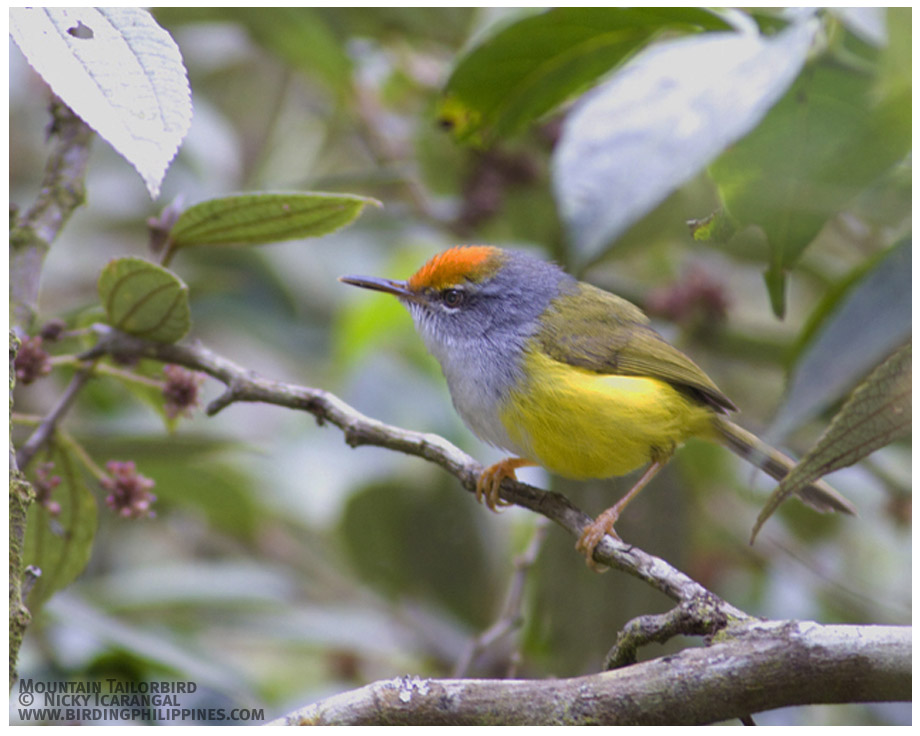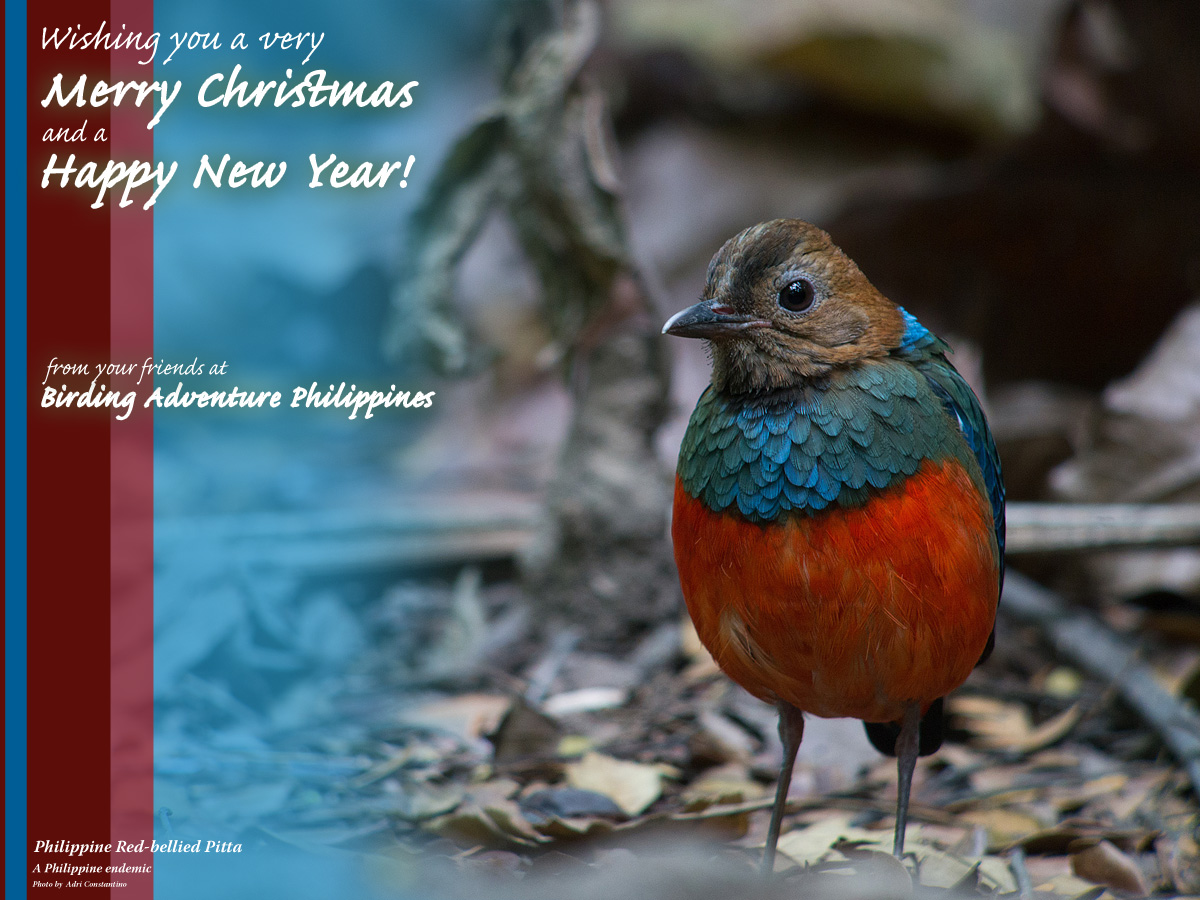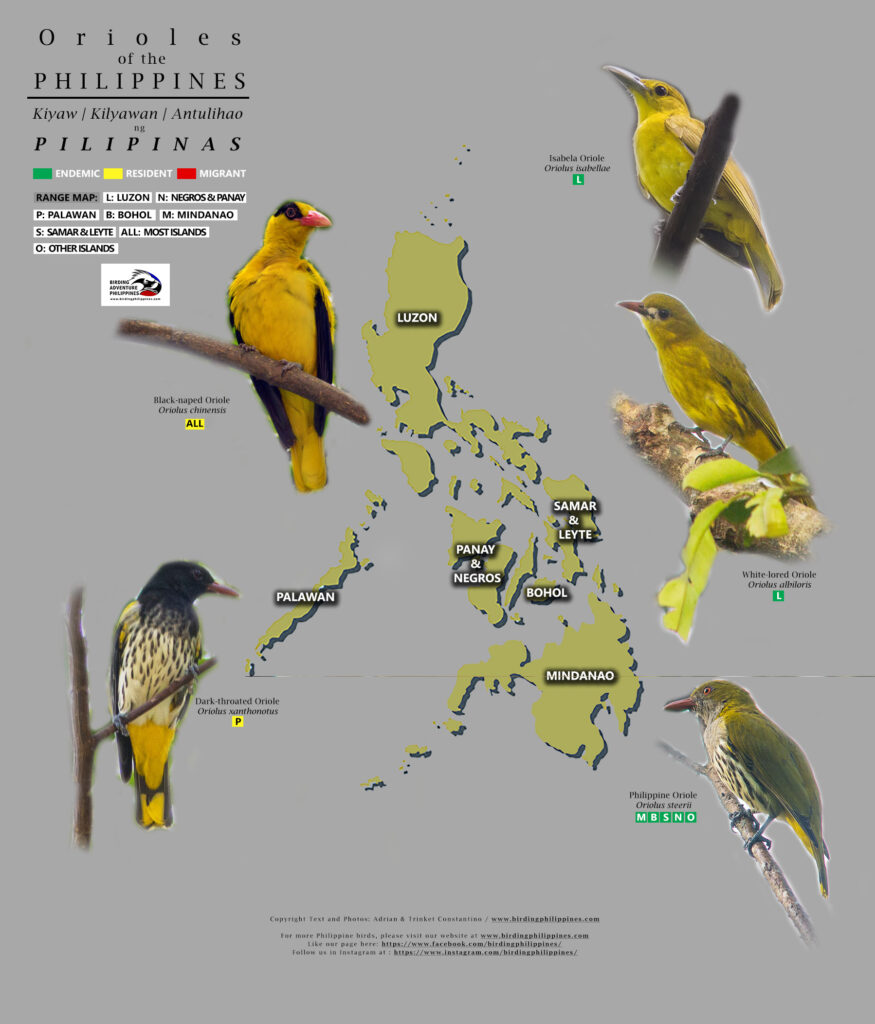
This #mondaymotivation, we have here another infographic for you! We present the Orioles of the Philippines!!! This whole week will be #orioleweek at Birding Philippines!!!
Orioles are a large family of songbirds that can be found in the "Old World" from Africa, Asia and Australia. Most species from this family are brightly-colored having patches of yellow, green or occasionally red contrasting with black or brown. This songbird family is also characterized by having very rich, whistle-like, melodious calls, another characteristic that makes them one of the most appreciated families in the bird world.
The Philippines has 5 species of Orioles, with 3 species endemic and 2 species resident to our country. The most widespread is the Black-naped Oriole, Oriolus chinensis, a resident urban garden bird that we share with other countries in Southeast Asia. The most rare among the orioles of the Philippines is the Isabela Oriole, endemic and found only in Luzon and is classified as Critically Endangered.
Orioles in the Philippines are called by many local names: Ki-yaw, Kikiyaw, KIlyawan, Kulyawan, Antolihao, Tulihao, among others. Join us this week as we take a closer look at these often bright and colorful orioles of the Philippines!
You know the drill, if you want a printer-friendly version, kindly click this link to download: Orioles of the Philippines A4
This poster is the 2nd in our series of bird families of the Philippines. The first one we did was on kingfishers, check it out here in case you missed it: Kingfishers of the Philippines.

